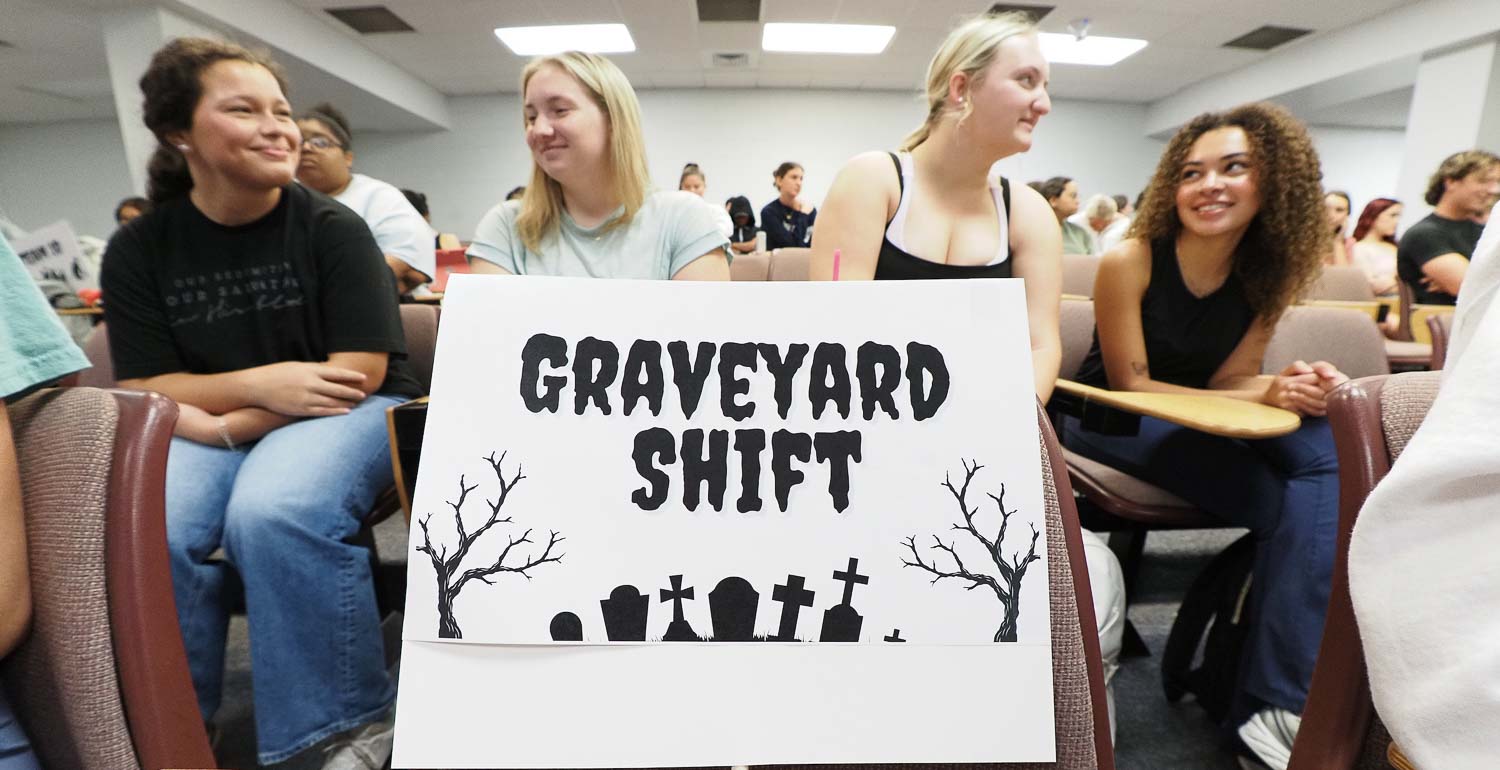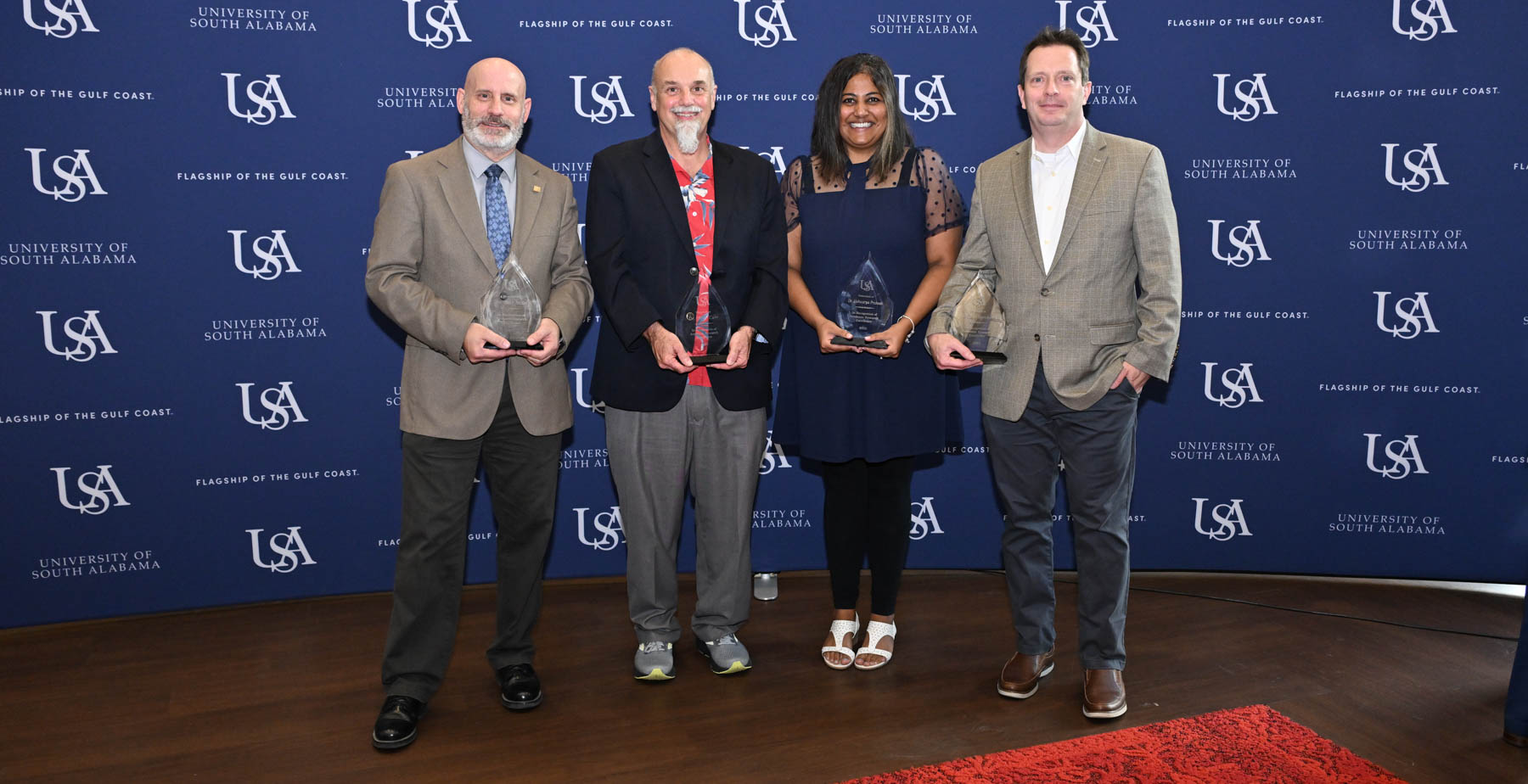Assessing the Health of Mobile Bay
Posted on October 22, 2019

Much like the proverbial canary in the coal mine – which warned miners of dangerous gases – the oyster, blue crab and speckled trout can warn us about the fragile health of Mobile Bay.
To that end, the University of South Alabama has received a five-year, $2.9 million grant from the National Oceanic and Atmospheric Administration to study how oyster, blue crab and speckled trout respond to changes in their environment.
“The research will involve understanding and linking physical, biological, chemical and human drivers of populations of oyster, blue crab, and spotted trout, also known as speckled trout,” said Dr. John Lehrter, associate professor of marine sciences. “There will be lab and field work to measure trends and variability in drivers and populations. Based on lab and field results, numerical ecosystem models will be used to analyze how future projected trends, as well as management and restoration interventions, may affect the populations.”
Lehrter and his colleagues, including USA students, will also assemble and analyze historical data to see how the populations have responded to long-term trends and variability in temperature, river discharge and water quality in Mobile Bay, and they’ll identify thresholds at which rapid changes in those populations occur.
Ph.D. student Mai Fung, who came to South after getting her bachelor’s and master’s degrees from the University of California, is one of Lehrter’s researchers. “One of the major questions we have in this project is how environmental variability affects quantity and quality, as well as the habitats and resiliency of these populations,” Fung said. “I will primarily take water and sediment samples and use these samples to spatially and temporally characterize the differences in environmental characteristics for these populations.”
You may ask, why are the specific populations of oyster, blue crab and speckled trout significant? Lehrter, who is also a senior marine scientist at the Dauphin Island Sea Lab, said each represents a different segment of our bay waters.
“Oysters are planktonic during larval stages, and then settle and grow in a particular location, so they are not able to move if habitat or water quality declines,” Lehrter explained.
“Blue crab are also planktonic during larval stages before settling to benthic, or bottom habitats. But unlike the oysters, they’re mobile, so they are able to make use of bottom habitat throughout the bay. Generally, bottom waters are where we see the most serious low oxygen and pH problems, so it’s likely that they will be impacted by changes, but perhaps not to the same degree as the stationary oyster. Speckled trout use both bottom and surface layers and are pretty mobile. Thus, they may be least impacted by environmental change.”
Lehrter pointed out that all three also have high fishing pressure, so there are management actions from the fishery side that may also be used to improve these populations.
“In sum, we’re looking at how do we manage the ecosystem both from the bottom up – water quality and habitat quality – and top down – fisheries management,” he said.
South Alabama students such as Fung will play a major role in the research, which benefits both the project and their future careers. “We plan to train five to seven Ph.D. and master’s students during this project,” Lehrter said.
Fung’s dissertation work is focused on mercury, a contaminant of major concern to both humans and the ecosystem. “I am investigating sources of mercury to Mobile Bay, and how mercury is connected to other processes such as carbon cycling and sediment metabolism,” Fung explained. “My ultimate goal is to gain a better understanding of how this contaminant can be managed.”
So this research project has multiple benefits. While providing useful information about the health of Mobile Bay and key populations in the bay, Lehrter said it’s also beneficial to South students conducting the research.
“This training will provide them with the background to become leaders in the area of ecosystem management, which is the direction that water quality and fisheries management is headed.”





